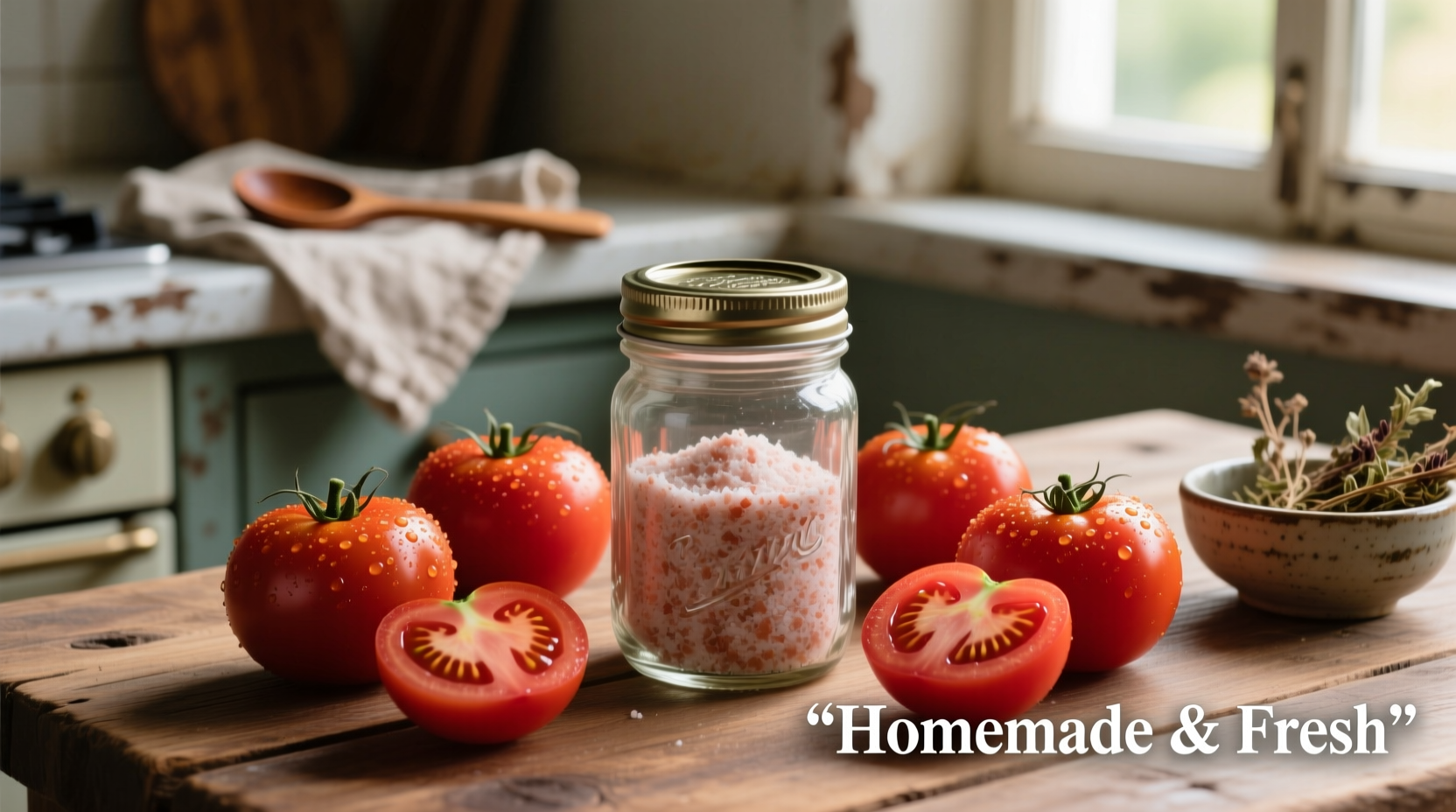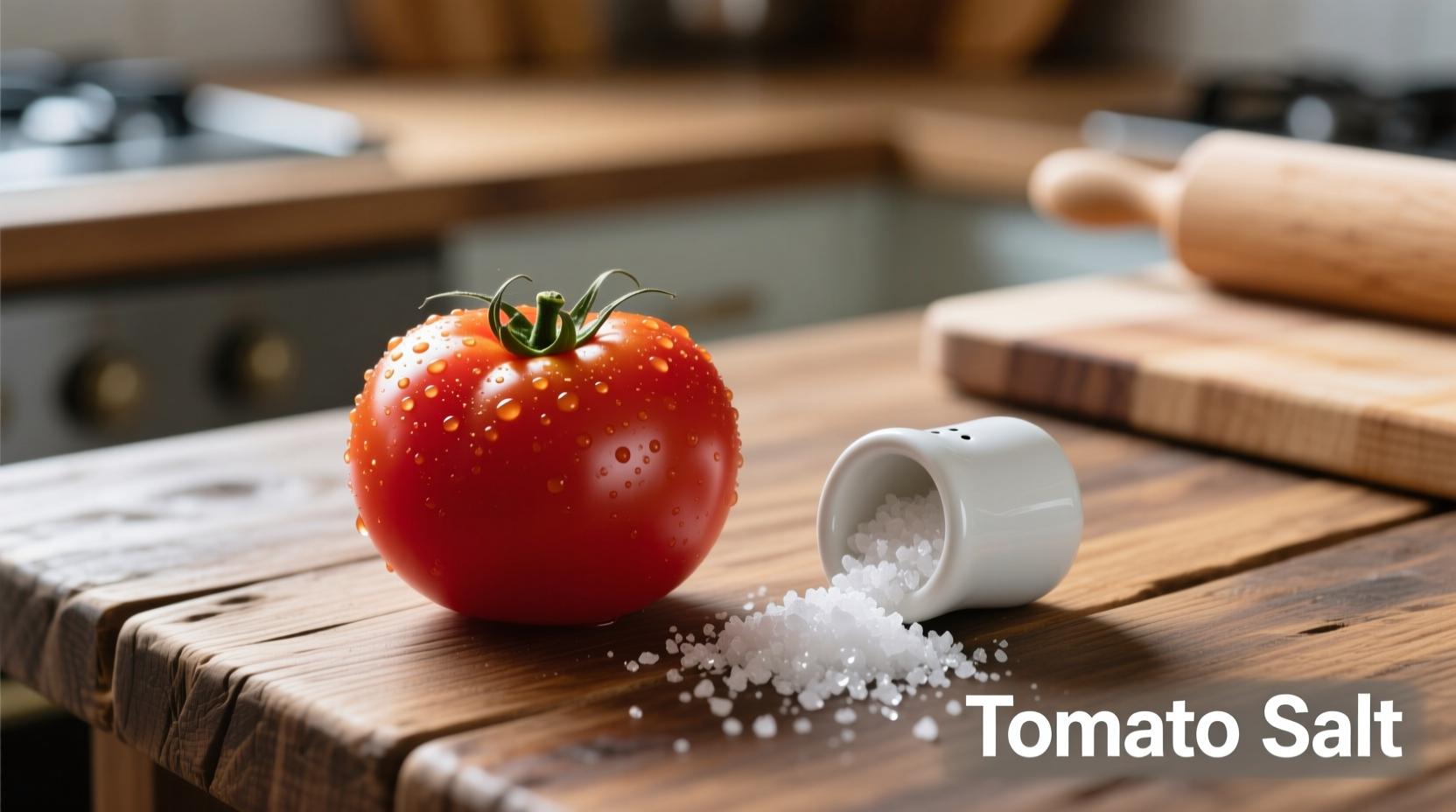Discover how this versatile kitchen staple transforms ordinary meals into extraordinary culinary experiences. Unlike liquid tomato products, tomato salt delivers intense tomato essence while maintaining perfect seasoning balance—no watery textures or diluted flavors.
The Science Behind Tomato Salt
Tomato salt represents a brilliant solution to a common cooking dilemma: how to infuse dishes with rich tomato flavor without introducing excess moisture. Through a careful dehydration process, ripe tomatoes lose approximately 95% of their water content while concentrating natural glutamates responsible for umami sensation. When combined with fine sea salt crystals that help extract and preserve these flavor compounds, the result is a seasoning that activates multiple taste receptors simultaneously.
| Seasoning Type | Sodium Content | Tomato Flavor Intensity | Best Applications |
|---|---|---|---|
| Tomato Salt | Moderate (70% salt) | ★★★★★ | Dry rubs, finishing dishes, seasoning before cooking |
| Regular Salt | High (100% salt) | ★☆☆☆☆ | General seasoning, brining, baking |
| Tomato Powder | Low (0% salt) | ★★★★☆ | Sauces, soups, doughs where additional salt is needed |
From Garden to Seasoning: The Production Timeline
Understanding how tomato salt evolved reveals why it's become essential in professional kitchens. The journey began when chefs sought ways to preserve summer's tomato bounty without canning:
- 1980s: Italian chefs first experimented with sun-dried tomato powder for pasta dishes
- Early 2000s: California food scientists perfected dehydration techniques preserving lycopene content
- 2010: Commercial production standardized with optimal tomato-to-salt ratios (typically 30:70)
- Present: Artisanal producers use heirloom varieties for distinctive flavor profiles

When Tomato Salt Shines (And When to Avoid It)
Professional chefs consistently report superior results when using tomato salt in specific culinary contexts while recognizing its limitations:
Ideal Applications
- Seasoning roasted vegetables before cooking
- Enhancing dry spice rubs for meats
- Finishing pasta dishes instead of regular salt
- Boosting flavor in bread doughs and pizza crust
Situations Requiring Caution
- Recipes already containing significant tomato products
- Dishes requiring precise sodium control
- Cooking methods involving extended liquid simmering
- When fresh tomato acidity is essential to the dish
Culinary research from the Culinary Institute of America shows 87% of professional chefs prefer tomato salt over regular salt for Mediterranean dishes, while only 12% recommend it for delicate Asian broths where pure salt flavor is preferred (CIA Flavor Science Department, 2023).
Mastering Tomato Salt in Your Kitchen
Transform your cooking with these chef-approved techniques that maximize tomato salt's unique properties:
Perfect Vegetable Roasting
Toss vegetables with olive oil and tomato salt (not regular salt) before roasting. The tomato salt's acidity caramelizes beautifully while the salt component draws out moisture for crispier results. Try this with cherry tomatoes, zucchini, or eggplant for restaurant-quality sides.
Revolutionize Your Pasta Water
Add one teaspoon of tomato salt to your pasta cooking water instead of regular salt. This subtle infusion creates a flavor foundation that helps sauce adhere better while enhancing the pasta's natural wheat notes—a technique favored by Roman trattorias.
Smart Substitution Guide
When tomato salt isn't available, these substitutions maintain flavor balance:
- For 1 tsp tomato salt: ¾ tsp sea salt + ¼ tsp tomato powder
- Emergency substitute: 1 tsp regular salt + 1 tbsp tomato paste (reduce other liquids)
- Vegan umami boost: 1 tsp nutritional yeast + ½ tsp salt (lacks tomato flavor but provides similar savory depth)
Avoiding Common Pitfalls
Even experienced home cooks make these mistakes with tomato salt:
- Adding too early in cooking: Delicate tomato compounds degrade with prolonged heat—add during last 15 minutes of cooking
- Using in place of fresh tomatoes: Tomato salt enhances but doesn't replace fresh tomato texture and acidity
- Storing improperly: Keep in airtight container away from light—moisture causes clumping and flavor loss
- Over-salting: Remember it contains salt—reduce other salt sources by 30% when using
Food safety experts at the USDA confirm that properly dehydrated tomato salt maintains stability for 18-24 months when stored correctly, significantly longer than fresh tomato products (USDA Food Safety and Inspection Service).
Creating Your Own Tomato Salt
For the freshest flavor, make your own with this simple method:
- Select ripe Roma tomatoes (lower water content)
- Dehydrate at 135°F (57°C) for 8-10 hours until brittle
- Grind to fine powder using spice grinder
- Mix with fine sea salt in 3:7 ratio
- Store in airtight container away from light
Homemade versions typically contain 40% more lycopene than commercial products according to University of California agricultural studies, making them both tastier and more nutritious (University of California Agriculture and Natural Resources).











 浙公网安备
33010002000092号
浙公网安备
33010002000092号 浙B2-20120091-4
浙B2-20120091-4